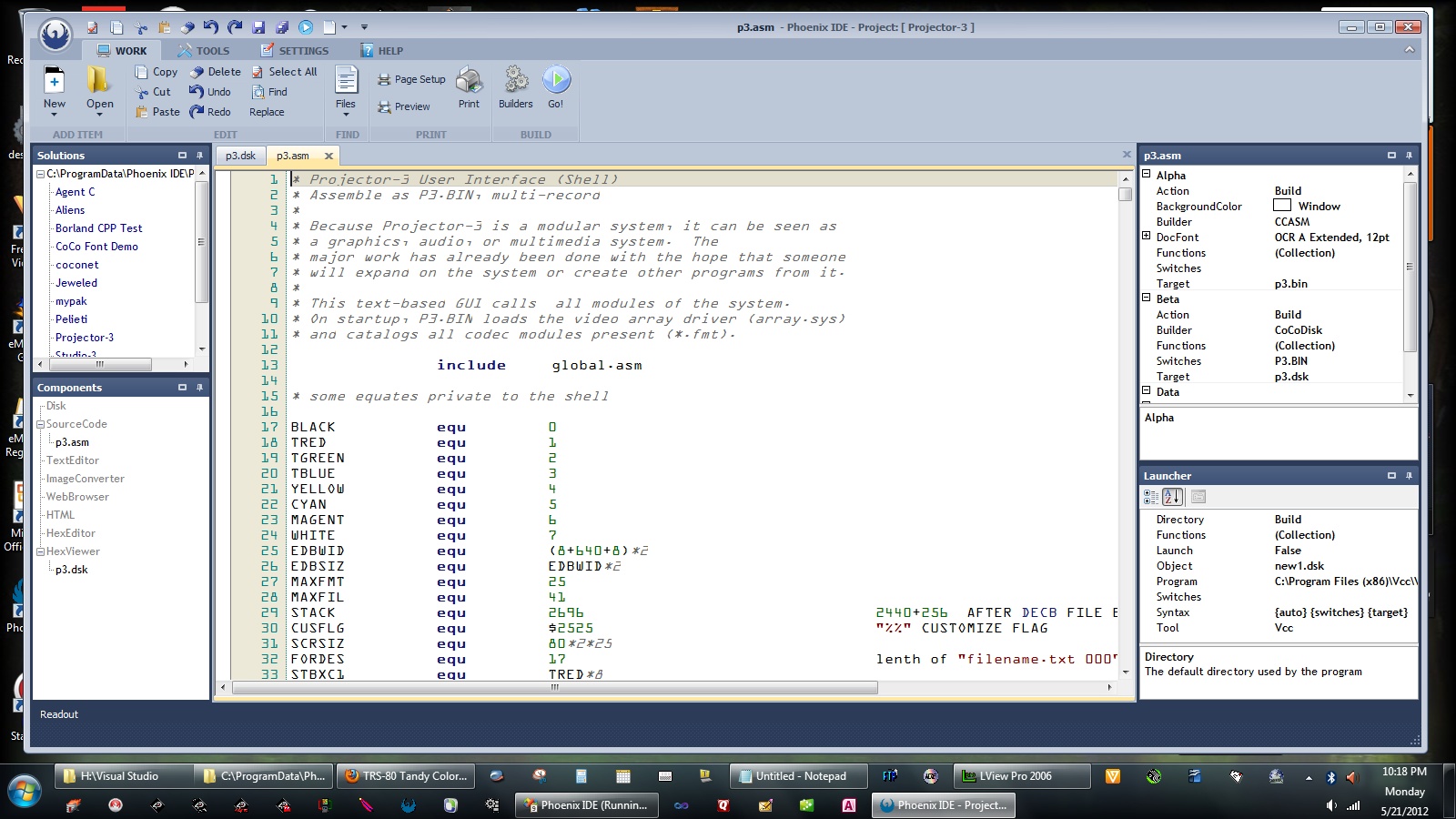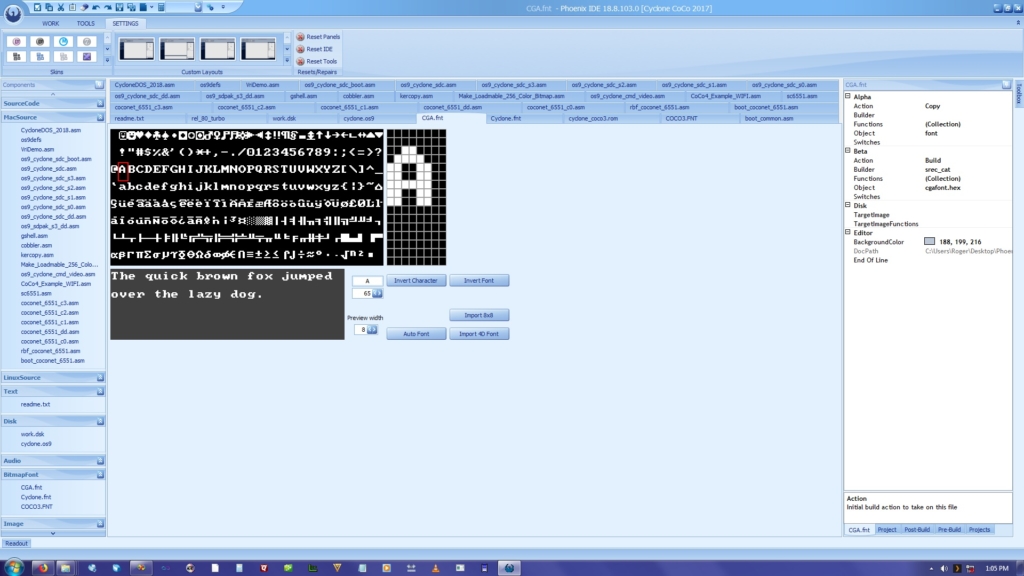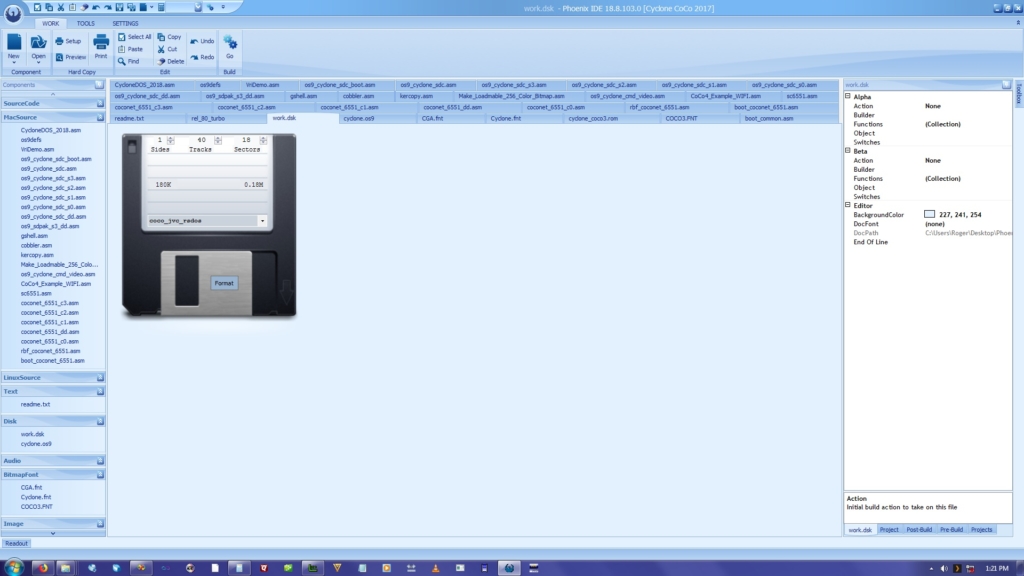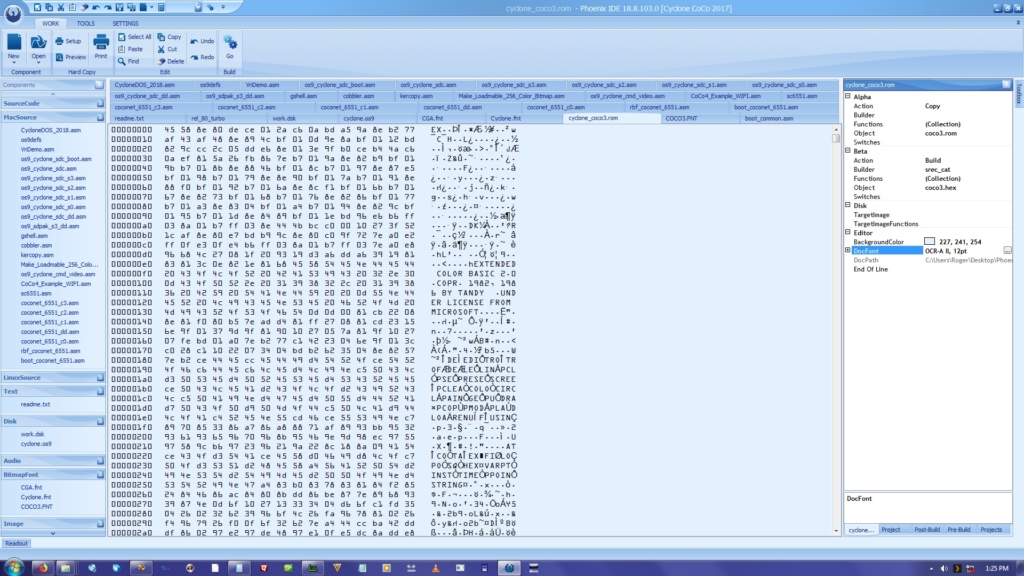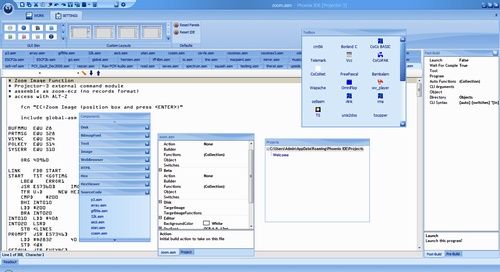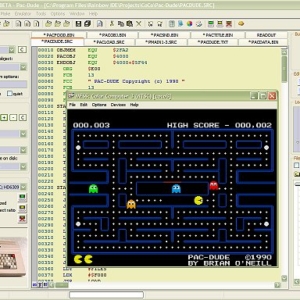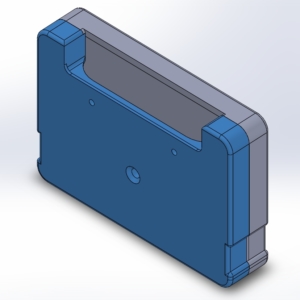Description
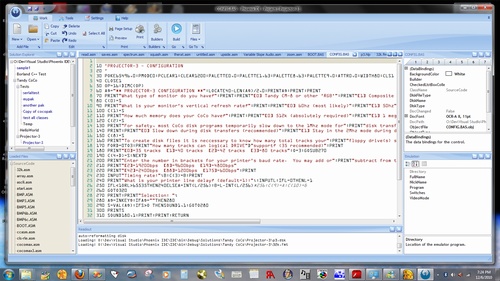 Download Phoenix IDE™ for Windows 8,10 operating systems.
Download Phoenix IDE™ for Windows 8,10 operating systems.
- Version 18.8.x allows saving to CR+LF, CR, LF formats (Windows/PC, Mac/CoCo, Linux)
- .NET 4.0 is required.
Upon purchasing, your product key will be sent to your PayPal-verified e-mail address. You may also contact me through this site or any of the TRS-80 Color Computer facebook groups, Matchbox CoCo group, Mr. CoCo group where I also give free tutorials and development advice.
The latest update moves the Phoenix app data folder to your Desktop. To upgrade, First install the new Phoenix IDE, THEN simply locate your previous C:\Users\YourName\AppData\Roaming\Phoenix IDE\ folder and copy this ‘Phoenix IDE’ folder over to your desktop and choose Yes to overwrite any existing files. Start the IDE and continue developing.
Write software for the 8048, 8041A, 8022, 8021, 6502, R65C02, R65C00/21, 6805, M146805, HC05C4, Z80, HD64180, 6800, 6801, 6803, 68HC11, 8051, 8080, TMS32010, TMS320C25, TMS320C26 , TMS7000, 6809, 6309, and more, utilizing the TASM cross assembler, the AS-series cross assemblers, CCASM, OS-9 ASM, and more. Also, add your own cross assemblers, compilers, image converters, audio converters, etc.
Vintage assembly programming is easier than ever using Phoenix, Multi-Target Integrated Development Environment (IDE) for Windows 10, 8, 7, Vista, XP. Create vintage games and apps easier than ever, for the TRS-80/Tandy Color Computer, Atari, Commodore, Vectrex, and many other vintage systems.
Easy on the eyes, less mouse movement, and friendly. The docking panes can become floating windows that you can move to another monitor if you like. Just drag them where you want them, re-dock them to another location, and configure your layout how you like.
Your projects may consist of many separate source components that are automatically compiled using any of the available assemblers – in a smooth and streamlined build process. This system assumes most of the work and lets you focus more on the actual programming.
You have full control over how your source code is assembled and what target image it ends up on, whether it’s 1k-256k ROMs or unlimited number of floppy disk images per project. You can also build directly to PC files and manually export your software.
One of the key features of Phoenix is the ability to run and test your software immediately after building using the post-build launcher which supports emulators such as M.E.S.S., VCC, etc. Also, any created floppy disk images will be mounted automatically in the emulator and ready to use as if you had inserted them into a real floppy disk drive on the target system. Once a project is set up and saved, you only need to reload it later, edit your source code, and click the Go button.
With the Phoenix Integrated Development Environment you can design software for all kinds of 8-bit vintage computers and game consoles from your Windows PC. The user-friendly interface takes you from the editor to running in seconds by calling on your favorite M.E.S.S. emulator system in a pop-up window. You can Edit assembly source code, raw binary files, and text files or ASCII BASIC programs, and have many files open at once for each project.
- CCASM – 6809 Cross Assembler is included
- OS-9 cross assembler is included
- OS-9 Level II 6809/6309 RMA/RLink is included
- Many cross assemblers included for the 6502, 6800, 8048, Z80, and more
- Borland C++ Builder is included
- Source code editor with syntax highlighting and other support features
- Text editor
- Hex editor, Hex viewer
- Font editor
- HTML editor
- HTML/PDF viewer
- Sprite/tile editor
- Picture editor with some of the best color-reduction dithering! Optimized palettes for dealing with almost any source image. Load many types of pictures and convert them down to display on low-color computers.
- Build ROM and disk images that can launch and run on your PC for testing (requires a supported emulator)
- Build software for the CoCo, Dragon, Vectrex, Atari, Commodore, Apple, and hundreds of other systems
- Add your own builders and use many built-in builders (assemblers, etc.)
- Any source file can have it’s own builder/processor/compiler/assembler
- Create/load/edit assembly source code, BASIC programs, text files, binary files and more
- Optional line numbers, tab widths, and more editor settings
- Checkbox-enabled assembler options for generating listings, symbol dumps, quiet mode, debug mode, and error reporting
- User-selectable fonts for the assembler, text, binary
- Add unlimited bitmap fonts to your game or app
- Don’t want to create a font from scratch? Several automatic font generation tools are included
- Send your object files to unlimited virtual disks targeting many vintage systems
- Multiple document interface (MDI) with multi-row tab option
- Full search and replace, cut/copy/paste, undo/redo capabilities for text *and* hex editors!
- Split-window option while editing
- All your settings are remembered the next time to launch the IDE
- Full-feature docking and auto-hide panels can be repositioned, saved, and loaded automatically.
- Panels can be dragged and docked or floated to customize the layout to your taste.
- Many built-in skins can be instantly changed with one click.
- Dither any full color picture down to 16 colors or 4 colors, displayable on vintage target computers.
- Full multi-document environment with Visual Studio style docking/floating panels.
- Undock, resize, and drag the GUI panels anywhere you like. Save up to 4 custom layouts, with the last one used automatically recalled the next time you start up.
Numerous places in the IDE let you specify aliases that automatically replace with complex or unknown pathnames and other settings.
- {appdatafolder} = Phoenix IDE AppData folder
- {projectsfolder} = projects root path
- {projectfolder} = current project path
- {outputfolder} = path where object files go
- {objectfolder} = path where object files go
- {toolsfolder} = path where your tools are
- {toolfolder} = path where current tool resides
- {helpfolder} = IDE help files path
- {auto} = auto-generated CLI switches
- {switches} = CLI switches
- {in} or {source} = path to project component file
- {out} or {target} or {object} = path to object file
Target system emulation:
- The VCC Color Computer 3 emulator is included
- Support for the M.E.S.S. emulator system and other emulators
- MESS. ROM Archive – Collection of M.E.S.S. BIOS ROMs for a smoother
experience. Unzip into your ‘MESS\BIOS’ or ‘MESS\ROMS’ directory - MESS .104b emulator
- MESS .125 emulator
- MESS Support Site
